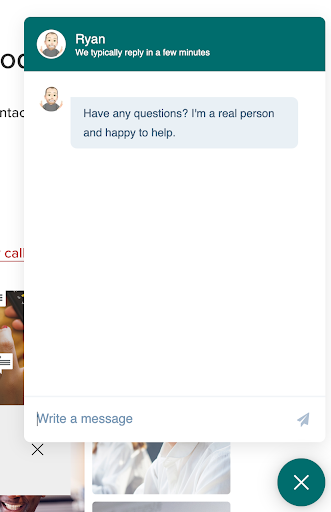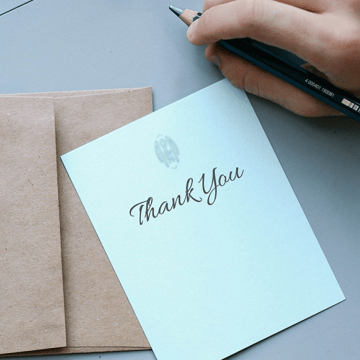.jpg)

As a business your customers are your greatest asset, so shouldn’t they be the driving force behind the decisions you and your company make?
While there are hundreds of techniques and customer service best practices you can implement, we thought it most helpful to share our tried and true - some that you can start implementing RIGHT NOW.
While these are just the tip of the customer service iceberg, these tangible suggestions will help you start paving the way to long term customer success.
KEEP THE CUSTOMER AT THE HEART OF YOUR OPERATION AT EVERY TOUCHPOINT.
Pro Tip: To set yourself up for success as a strong customer service leader it is also important to ensure you’re using the right tools to help you maximize your service potential. If you don’t already use a tool that helps automate your customer support, we recommend looking into a customer ticketing platform, like Zendesk. Implementing a tool like this will help you route, prioritize, and customize your customer’s tickets with ease, making your team more effective and efficient.
Best Practice #1
Always Put Your Best Foot Forward
This sounds so simple, yet it often falls through the cracks in critical customer interaction moments.
When I say “critical moments,” I am referring to the point of contact your customer has with your team that can make or break their opinion of your company and how devoted you are to providing them with good service.
For example, during the onboarding process it’s so important to make a positive first impression and really emphasize your willingness to do what it takes to give them the best possible experience.
Another critical moment might be when a customer is having a service or product issue and they reach out because they’re experiencing a problem. These are just two examples of moments where it is especially important for your team to pay close attention to the impression you’re making.
So what steps can you take to make sure the foot you’re putting forward is your best one?
First, responding in a timely manner means so much to someone who is needing help. To give a personal example, I reached out to the support team of a service provider I was using a couple months ago about an issue I was having with their product.
I emailed them (because it was their only offered method of support - i.e. no chat or phone number), and I waited... and waited...and waited for a response. A week later, after hearing nothing back I eventually switched providers.
Finally, two weeks after I initially reached out I eventually got a response. The agent was helpful and kind, but by that point I had already made the switch to a new provider because I was unable to get the help I needed in a timely manner. Unfortunately, no amount of kindness by the agent could have won me back after waiting so long to receive support.
But as important as responding quickly is, just responding quickly isn’t enough. The response will be the most helpful and effective when it comes from the right team and by the right team member who is knowledgeable about - and has the power to solve - the issue.
Even if you get a same-day response from the company you’re reaching out to, but you’re stuck getting passed around from department to department until they eventually pass you to someone who can fix your issue the time to resolution and number of touches took so long that the customer is exhausted and your team has wasted much unnecessary time.
Nearly 70% of customers are irritated when their call is transferred from department to department. (Zendesk)
Preventing tickets from "department hopping" is where a service like Zendesk can be extremely effective in helping route your tickets to the right team, eliminating effort on yours AND the customer’s part.
A second element of putting your best foot forward is listening to your customers completely without interruption and with an open mind. This is especially helpful when you have an angry or flustered customer who, more than anything, is looking to vent to someone.
Studies have shown that if the company’s customer service is excellent, 78% of consumers will do business with a company again after a mistake (Hubspot). Turning a bad experience into a positive one isn’t always easy but it can completely change a customer's perspective of your brand. It starts with listening to the customer’s needs, responding in an empathetic way, and doing everything you can - within reason - to right the wrong.
If a company's customer service is excellent, 78% of consumers will do business with a company again after a mistake. (Hubspot)
Best Practice #2
Make it Easy for Customers to Get in Touch
There are many different channels companies make available for their customers to get in touch with them. Generally, the more channels available, the better.
Whether you offer support over the phone, through social media, or via a support ticket or chat it’s vital that you make it clear how customers can reach your team should they need to. We recommend highlighting your support channels in obvious places on your website, on your social media channels, and in your emails.
For example, when people visit the ArenaCX website, they are constantly given the option to Get In Contact, no matter where they are on our site. This button remains in the header so customers know how to get help from our team at any time.

For example, if someone calls your company’s support team, will they be waiting on hold for 30 minutes or will their call be answered immediately? If someone starts a chat, is it a chat in real time or will they be waiting at their computer for 15 minutes until they receive a response back?
If you can’t be specific about the average time it will take for them to receive a response, a generic message is another good alternative.
Setting expectations for the customer is just another way to make interacting with your company easier and give them the ability to interact with your brand in the way that is most convenient and comfortable for them.
Best Practice #3
Surprise and Delight Customers When Possible
Surprising and delighting customers is a tactic described as sending an unexpected small care package or hand-written letter to a customer thanking them or telling them that they’re appreciated.
This tactic requires a bit more thought and manual effort, but is also what makes it so special for the customer who receives it. While not feasible to do for every single customer, it is a meaningful act that when done at the right time can greatly improve customer satisfaction and retention.

Here’s a personal example: I recently started ordering products for my dogs from a pet supply company. In my first order they included a hand-written letter, which referred to my two dogs by name and included a kind message thanking me for using their service.
Although this was just a simple letter it certainly gave me the “warm fuzzies” and made me feel like a truly appreciated customer. The company gained a repeat customer that day simply taking a few extra seconds to write a note.
Sending this letter at such a critical point in a customer's journey - like right after their first purchase - is such a small act that can make them feel special and in turn make them more loyal to your brand. What an awesome payoff for the brand and the customer!
Other great times to send surprise and delights include after a customer writes a raving review, refers a friend, or hits a milestone with your company.
On the other hand, surprise and delights can be used to help reconcile a relationship that is on the rocks. For example, if a customer writes a negative review that you believe you can fix, or if a customer encountered a faulty product and you want to apologize with a small gift.
The awesome thing about surprise and delights is that the “surprise” can be large or small… a hand-written note can be as effective as a small goodie bag of brand swag or even a large gift. The “delight” customers feel from the gesture can make all the difference in how a customer thinks about your brand.
Best Practice #4
Help Your Customers Help Themselves
Make it easy for customers to find the answers they're looking for by building out a knowledge center that allows them to easily help themselves. According to a report by Zendesk, 76% of customers prefer self-service because it offers the least amount of interaction friction. Studies show that customers prefer to try finding answers on their own before reaching out to support.
76% of customers prefer self-service because it offers the least amount of interaction friction (Zendesk)
Ideally, a knowledge base will be a robust database of your customer’s questions with answers on if and how they can self-solve for their specific need.
Groove has a great article explaining How to Create a Knowledge Base, but it can take a while to build out a fully functional self-service solution. Luckily, there’s an easy way to get started.
If you don’t already have a knowledge base built, it can seem like a daunting task with no easy place to start. A simple way to dive in is to make a list of your customer’s most frequently asked questions.
Start with the top 5-10 and create short self-service articles that address these FAQs and offer ways for the customer to simply and easily solve the problem on their own. Even implementing just a few simple articles can make a large impact to your overall number of support interactions if you provide customers with the right tools to solve problems for themselves.
Best Practice #5
Offer Assistance Proactively Where You Can
Last but not least, be proactive when it makes sense to help eliminate the need for customers to reach out.
For example, if you realize there was a bug in your company’s latest software release that will affect your customers it might make sense to reach out to them before they even reach out to you, letting them know that you recognize there is an issue and that they may experience something unusual.
By proactively letting customers know that there may be an issue and that you are actively working to resolve the problem, they can plan to encounter this service hiccup and feel confident that you'll have it under control soon (bonus points if you keep them up to date on the status of the fix).
This proactivity will not only gain brand trust from your customers, but is also likely to save your company money by preventing an influx of tickets when people do experience the issue.
With so many amazing tips out there, we hope you find these helpful and easy-to-apply. Have you had success with other tangible customer service best practices? We’d love to hear them! Leave your go-to best practices in the comments.
Interested in more great customer service tips and tricks?
Sign up here to receive newsletters from ArenaCX.
Subscribe and stay up to date
receive essential emails.






Speak Your Mind